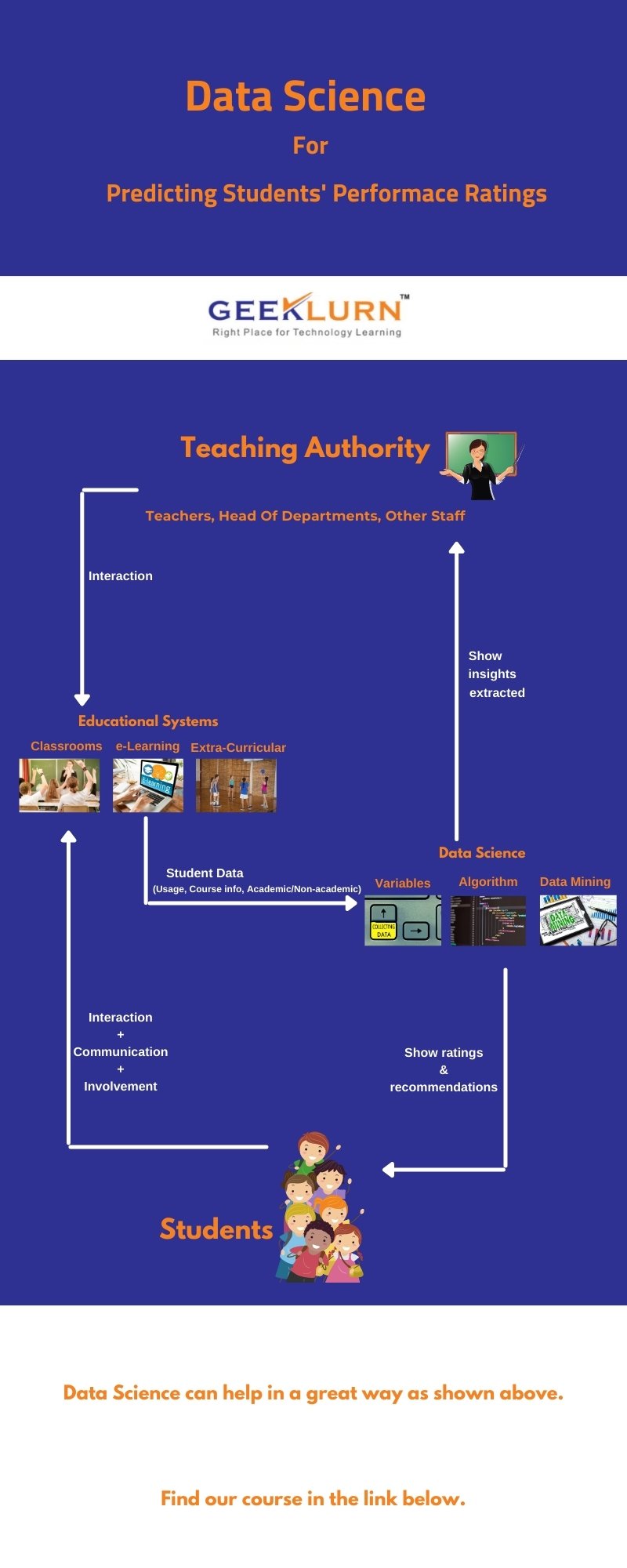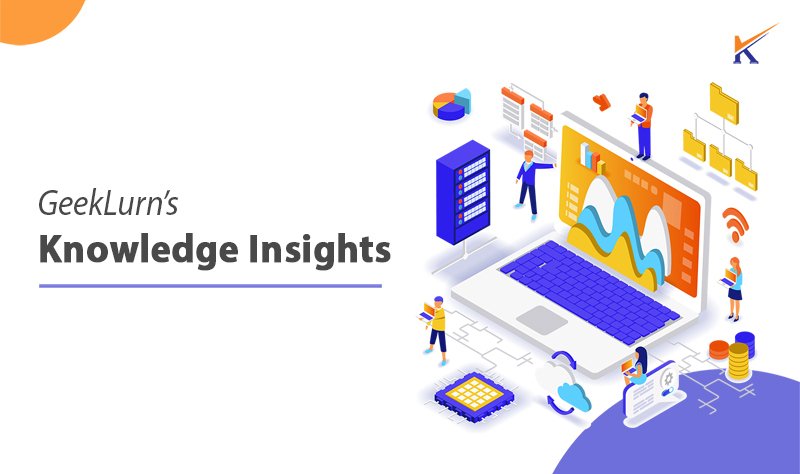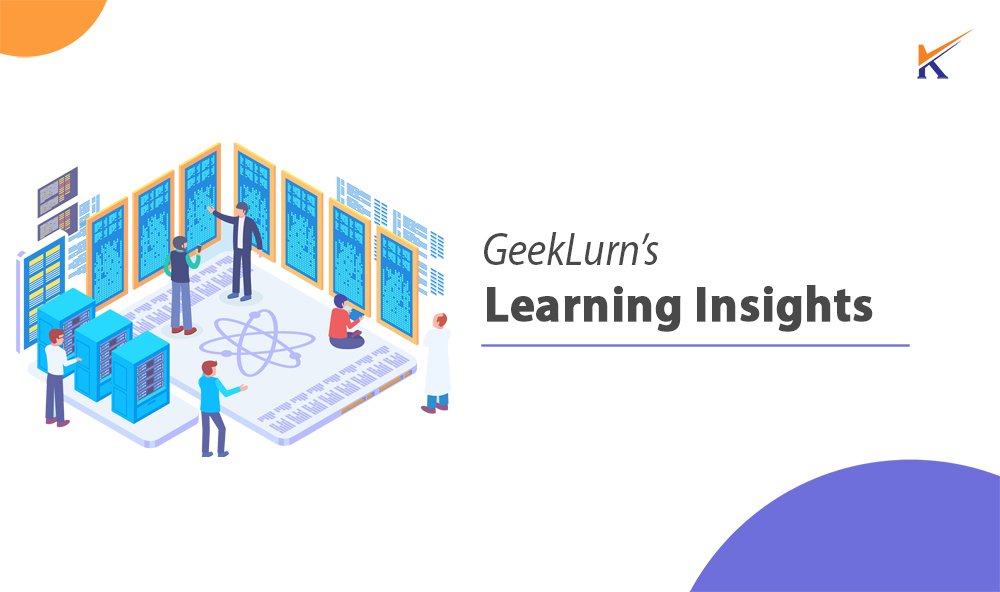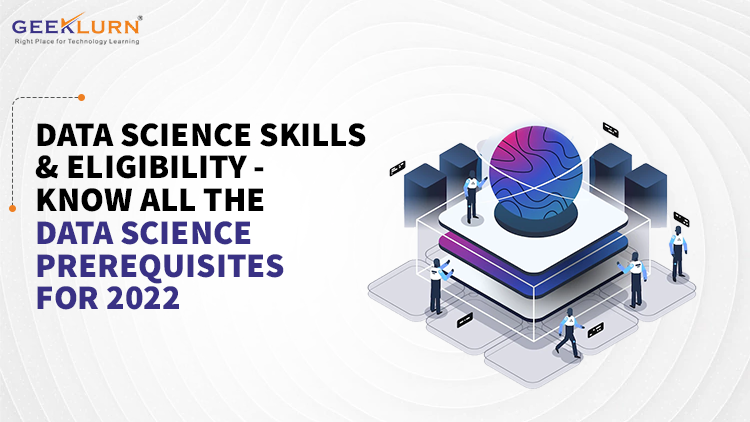Last Updated on: August 4, 2022
Learning at school is the most important step in a person’s knowledge ladder. School education lays the foundation and the knowledge base on which future learnings and wisdom are built.
In today’s scenario, with almost every sector growing exponentially, the education sector is not far behind. Technology has seeped into almost all facets of this industry, thereby making it stronger than before. Because of this, it is now possible to collect lots of data and work on them to extract the necessary insights.
One such area is the use of data science and analytics in predicting the performance rating of students at the school level. This could enhance the whole learning experience of students on many levels.
Table of Contents
What is Data Science?
In every domain or sector, data is available in abundance in the raw format. All these could be critical information, which when used could be a game-changer.
Data science is the analysis and extraction of valuable information from this raw data using various tools, algorithms, and models.
Advantages of Data Science in Education
Educational institutions house a lot of information and data that spans school and district records, archives of instructional material and books as well as student responses. This rich data, along with data related to actual classroom interactions, can be very useful in studying classroom management-related topics. The richness of education data, including text, links and behavioural profiles, can play a major role in analysing and solving several educational problems.
Educational data can be used to:
- Train Educators – The analysis of this data can be used to solve the problems plaguing educational systems and develop a deeper understanding of established solutions.
- Empower Educators – Data science in education can empower educators to perform data visualisation and predictive analysis.
- For Better Understanding – The massive data can be visualised and reduced to make sense of many complex records.
- Data Prediction – The vast amount of data from the education system can be used for modelling and prediction of issues, like student attrition and dropout, learning delays, progression problems, assignment completions, bias and prejudice in grading, etc.
- Develop Strategies – The existing data can be used to analyse and understand to set parameters and develop strategies for improved education.
- Contextualise Education – Large data collection can help in uncovering the features that can improve the effectiveness of an educational intervention.
If you are interested in making a headway with data science in the lucrative education sector, you can begin your journey with GeekLurn’s Data Science Architect Program. With 6 months of live interactive classes conducted by industry experts and 18 months of sponsored project work, this program offers a 100% placement guarantee to kickstart your career in the exciting field of data science.
Real-Life Applications of Data Science in Education
The use of data science in education has increased significantly, especially when everyone was locked in homes due to the COVID-19 pandemic. The online study and work modules became an integral part of education, with recorded lectures and online discussions becoming the norm. Some real-life applications and advantages of data science in education include:
Continuous tracking of students’ performances in all the key areas
Helps to keep track of the performance of students in various key areas including academic, non-academic, discipline, and behaviour to name a few.
Monitor and further improve students’ area of strength
Every student would have an area where he/she is strong. This framework helps to identify that area and also predict ways to strengthen it further.
Track and improve students’ area of weakness
Like the strengths, every student would have his/her area of weakness. This framework helps to identify that area and suggest ways to improve and overcome the same.
Categorise students into high, medium, and low-performance sections
This framework extracts enough insights from the available students’ data and thereby helps to categorise them into low/medium/high-performance segments.
Helps to focus on students on an individual level
Data science framework helps gather valuable information on students on an individual level. This enables the school to customise the learning process required for the student. This also helps the faculty to streamline relevant tasks for each of them based on their performance level.
Helps to reduce the rate of dropout/failures
Since this framework provides insights to understand the performance levels of students early on and accurately, it helps to identify the students lagging in their academics. Such students could be provided with a customised learning plan based on their strengths and weaknesses, which in turn reduces school dropouts and failures.
Helps monitor the student-teacher relationship
One of the most important factors in a school environment is the one-one relationship between the teacher and his/her student. The understanding and involvement levels of students are impacted by the type of rapport they maintain. Data science helps to extract such insights that could prove useful on many levels.
Provides constant feedback to improve and fine-tune school curriculum
A robust school curriculum helps develop the right quality of knowledge base in the students. Data science helps in providing continuous and informative feedback to the school authority, which helps them fine-tune their curriculum to benefit the students.
Helps analyse the resources used by students and thereby perform cost analysis
Not all the resources made available by the schools are utilised by the students. Data science helps in extracting this information. It could be useful to analyse cost efficiency as well.
What are the popular prediction algorithms?

A discussion about how data science helps in improving the students’ performance at schools would not be complete without talking about some of the popular algorithms used for the same.
The core of a system that performs predictive analysis is an algorithm. Algorithms are a sequential set of rules followed by the program, to achieve the required goal.
For predictive analysis, there are a few popular algorithms in use. A small dive into the technicality would give us a fair idea about them.
The following are a few of them:
Decision Tree
This algorithm is widely used because of its simplicity and ease of comprehension and understanding. To put it simply, this algorithm divides a huge data-set into a series of smaller ones via nodes. This can also be visualised as a series of ‘If-Else’ conditions to reach the required decisions.
Neural Network
This algorithm is slightly complicated when compared to the previous one. Assuming all the different qualities and characteristics of students as variables, this algorithm draws both linear and non-linear relationships among them, thereby exhausting all possible interactions to arrive at the decisions.
Naive Bayes
This algorithm is used mainly by researchers to identify the independence of the variables involved in addition to the dependency factors.
K Nearest Neighbour
This algorithm performs in an effective way and provides accurate results. Out of all the algorithms discussed here, this takes the least time to categorise students based on their performance slabs.
Support Vector Machine
This algorithm has a good generalisation precision and high levels of accuracy in identifying students who run a risk of failing or being a dropout.
Data Science for Students: Case Study
Data science is being used in various aspects of education and helps policymakers deal with different types of problems. Let us look at a case study of how the University of Florida is utilising education data for predictive analysis and data modelling.
The case study relates to using data science for students dropping from college due to academic or financial challenges. The high dropout rate of students from universities in the US is likely to limit the access of industry to qualified individuals. To deal with this menacing issue, educational institutes are using data science techniques to predict the rate of students dropping out and developing strategies and plans to resolve the issue. Data science techniques are being used in the following ways:
- The University of Florida is using IBM InfoSphere to extract, load, and transfer data from multiple resources.
- It is using IBM SPSS Modeler for predictive analysis and data modelling and aligns them with IBM Cognos Analytics, a powerful business intelligence tool that enables the reporting, analysing and monitoring of events through interactive visualisations.
Different variables, like a student’s background, demographics, school grades and economic background are analysed to assess the dropout probability. This information is then used for early intervention to prevent students from dropping out.
Conclusion
School-age is probably the best age for humans to adapt to changing rules, environment, and habits. Kids at this age largely do not have a rigid mindset and could be moulded much easier than the grownups. A proper and foolproof performance prediction technique using data science would ensure students are re-shaped into the best versions of themselves. To learn about this in detail, please enrol in the Data Science program of Geeklurn.
Nowadays, we see a lot of education services and providers promising the best education for kids at the school level. However, at the end of the day, it is the quality of the education that matters the most when compared to the quantity.
Every child has a special skill. The best place to identify that is at the school level. Data science helps hugely by innately performing the SWOT analysis via algorithms and arriving at decisions to highlight the performance ratings and areas of improvement.






